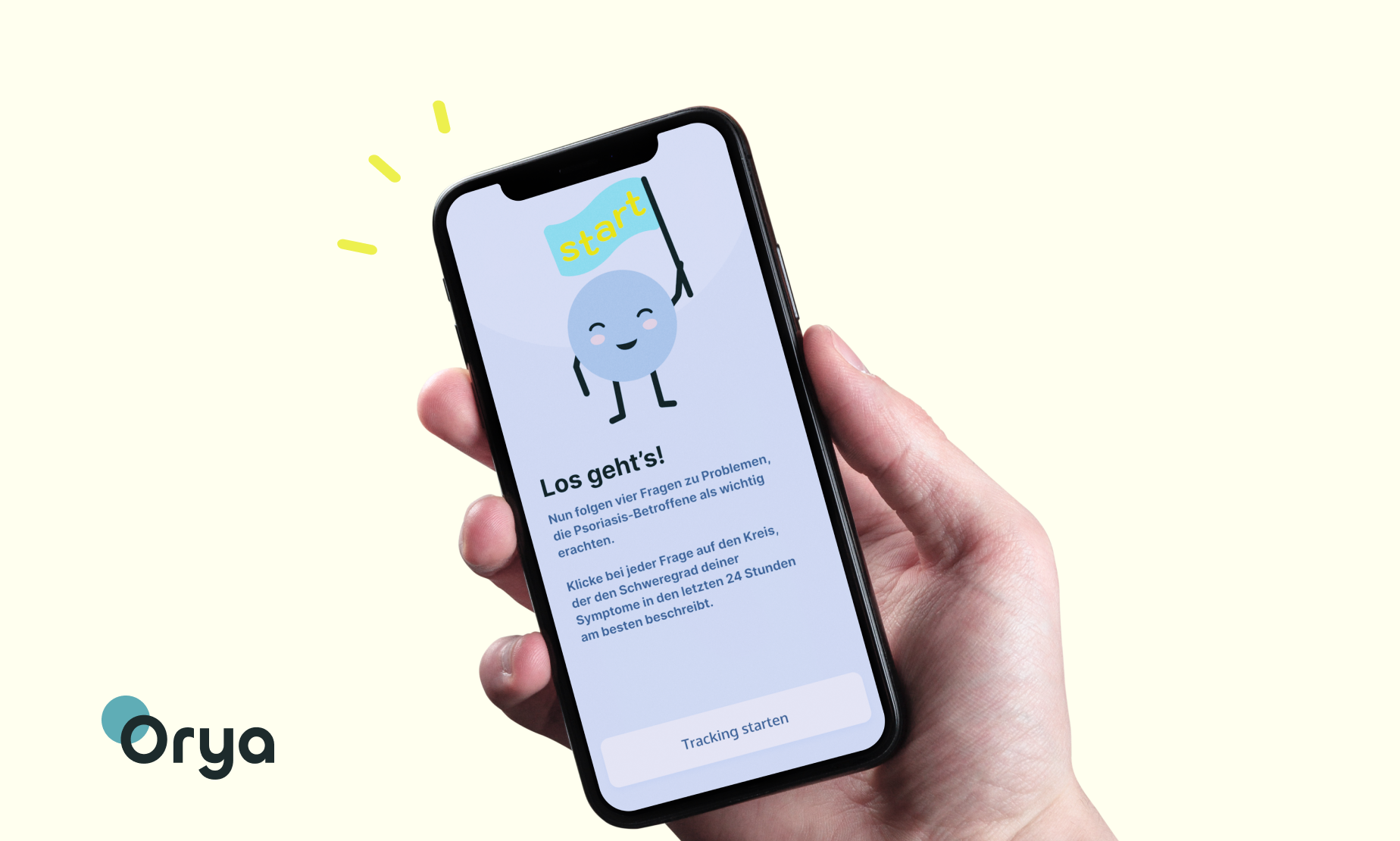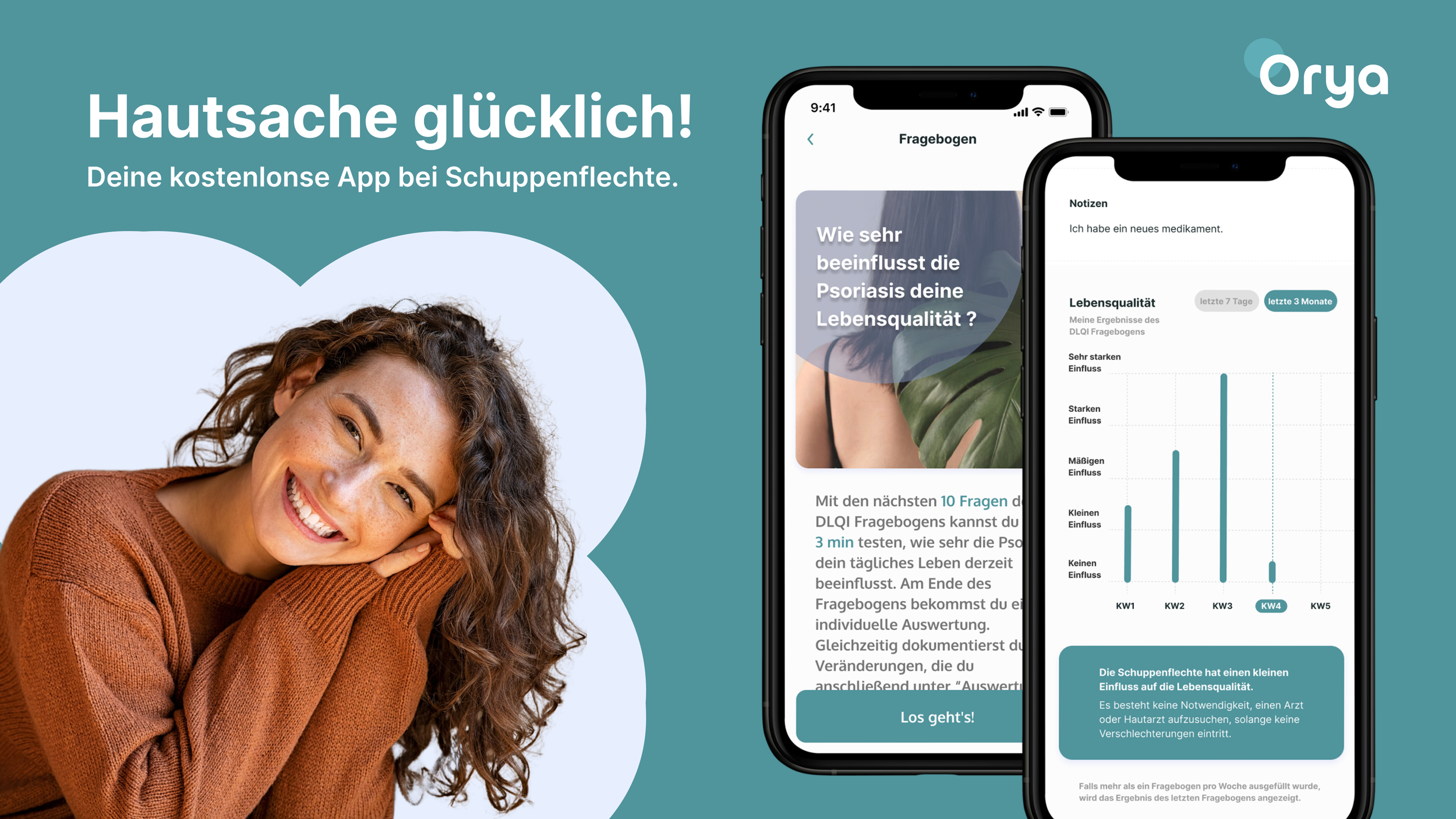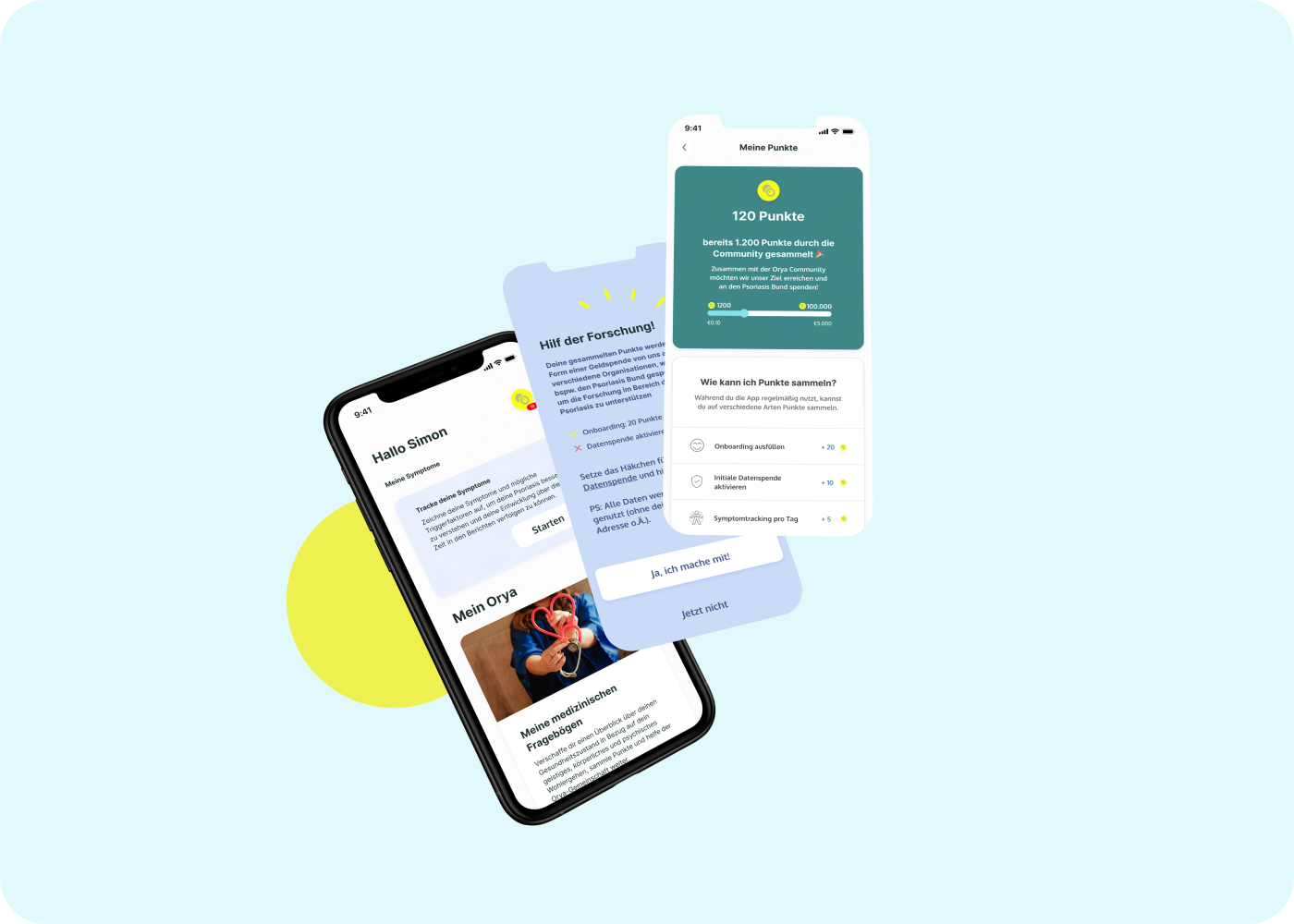Orya
Understand your psoriasis for a happier life.
By Priscila Ferreira
Orya is a mobile app companion for people with psoriasis. The app can help patients and healthcare teams find ways to help cope more effectively with symptoms and treatment side effects.
The Challenge
Helping people with their individual conditions.
Itching, redness, burning, pain… each psoriasis manifests itself differently.
Psoriasis is a chronic condition with no known cure. Psoriasis can impact life in many ways. It affects the way people feel about themselves, the clothes they choose to wear, the way they manage symptoms, and the way they care for their overall health.
My Journey
The kick-off
I joined Orya in September 2021. I was part of a cross-functional team including a Product Owner, a UX Researcher, Developers, a Scrum Master, and myself as a UX Designer.
The business partner
I was hired to start the project from scratch. This project was created for our client Bristol-Myers Squibb Company.
The objective of the business partner was to collect data insights from the users that would help them with the development of a new psoriasis drug.
I had a lot of opportunities to do user research, and competitor analysis and I could use different methods for that. In this use case, I will highlight just a few initiatives otherwise the page would look too extensive.
User Research
Who are the patients?
The incidence, prevalence, and manifestation of psoriasis of the skin are similar between different sexes. In order deep dive and understand our users, a survey and several interviews took place online and the result is the following persona:
What are the pain points and needs?
Wants to feel heard - The users don’t feel heard by their doctors. Due to lack of time during the consultation, they feel that the wrong medication is prescribed.
Creams are not treatments - The users don’t perceive creams as medication and don’t feel motivated to use them. Also because they don’t want to spend a lot of time applying those every day.
Get informed - Normally, the users don’t have enough information about their condition because they expect to receive it from a doctor.
Understand triggers - Users have a strong wish to understand why some symptoms get worse after consuming some types of food or during weather changes.
Get a proper treatment - They want to receive better treatments that work.
“I started to document to identify thrusts.
For this purpose I tried to create a legend with characters, but this is very time-consuming. I have a sign for head (circle), sign for nails (sticks like finger)
behind it I make a + (from + to +++) depending on how strong my symptoms are. Underneath I write the medicines that I have used””
“I would put down a block and a pen right here where I am sitting now in front of the PC and then I would write down my daily routine and day by day a new page in order to recognize somewhere: oh here is a parallel to the day before or to the last week, what has not done me any good, or here sth I have done...e.g. a salt bath...and that has done me good and then write something like that down at the end with pros and cons and so develop myself further.”
Co-creation
Design Thinking Workshop
At this point, we already had very good information about the user and their needs. To start ideating our product, we decided to run a Design Thinking workshop that was facilitated by our Scrum Master and the core team participated.
We all had lots of ideas but we had to prioritize the most important ones that would become the core feature. With that in mind, we could define our first “How might we?”
“How might we help the patients track their symptoms and document notes so that they can start identifying triggers for their psoriasis?”
And the outcomes from the session helped the team to ideate the feature and define next steps for reserach.
Design thinking workshop Sep 2021
Diary Study
There are many different ways to build a symptom-tracking feature. Before starting to design the symptom-tracking feature, I decided to propose a diary study with some of the patients in order to validate some hypotheses.
The goal was to validate the hypothesis and to understand what
the users want:
WHAT do patients want to track?
HOW do patients want to track?
WHEN & HOW OFTEN do patients want to track?
The setup:
10 users
Survey built considering trackable areas: body parts, symptoms, medical questionnaire, and mental health check.
Offer to upload photos
2 weeks study - 30 trackings.
Outcomes:
They want to track symptoms - Redness, itchiness, burning, pain ✅
They don’t want to take photos - They don’t find it relevant and also some of them don’t want to look at their psoriasis too often. ❌
They want to take personal notes - They find it relevant to write down things on their own. Like a diary! ✅
They want to track their overall condition in a scientific way - the medical questionnaire was highly appreciated ✅
They don’t want to track it every day ❌
They will track after getting a personal reminder - participants mentioned that the daily email reminder helped them to build a tracking routine. ✅
They will track as soon as they get a reminder - participants prefer to individualize the time of the reminders ❌
The Concept
After this insightful analysis from the diary study, I was able to come up with the first version of symptom tracking. I took a close look into the user’s wishes and created the first user flow & first concept.
First symptom tracking user flow
First concept
To validate the concept, I did an unmoderated usability test with the Useberry tool. I created the prototype in Figma and sent out a link with instructions and follow-up questions. I received valuable feedback and finally, the symptom-tracking feature was validated and ready to be developed in pixel-perfect.
Introducing Orya
Symptom tracking is just one slice of Orya. With Orya, patients become an expert in their psoriasis. They can track symptoms, track disease progression, and support research.
How are you today?
In a few clicks, you can choose the affected areas in
your body, and check the severity of symptoms by
answering a scientific medical questionnaire. Besides
that, you can write your notes, track some common
influence factors and check how is your mental health.
Understand your
Psoriasis
Check personal evaluation in the app. Record symptoms,
medical questionnaires, external influences, and your
therapy - and understand how you are doing.
Help Researchers
Scientists can develop better treatments the
better they understand you. Do you want to
support research? Then donate your data
in Orya.
Learn and become
an expert
Scientific articles from recent research made
it easy for you. Select your favorites and save them
to read later.
Orya is a certified medical device
Export your information into a PDF and share it with your
doctor in your next appointment. Your doctor will be able
to clearly evaluate your symptoms and triggers. With that,
you get to have more time to discuss better treatments
for your individual condition.
Wrap up
Orya was successfully released in July 2022 for iOS and Android. At the moment, we have thousands of users using and sharing data every day. We are still working on new features and improving the existing ones. Recently, Orya became a certified medical device. It means that the app can be used for medical purposes. This makes me very proud.
There was a lot of research and testing until we get certified. But this is another story.













